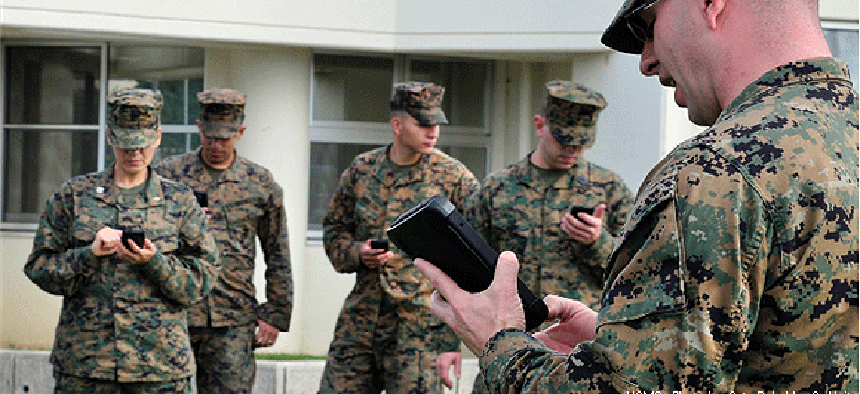DOD plan for mobile not BYOD-ready


Connecting state and local government leaders
The department recognizes the need to keep its workforce "relevant" and plans to accommodate Android, Apple and BlackBerry devices, but security concerns keep personal devices out of the picture, for now.
The Defense Department's recently unveiled mobile device implementation plan makes room for Android, Apple and BlackBerry devices, but does not go so far as to include a bring your own device (BYOD) strategy.
The plan, which supports the DOD's June 2012 Mobile Device Strategy, establishes a framework to leverage commercial off-the-shelf products for the department's 600,000 mobile-device users and promote the development and use of both secure classified and protected unclassified mobile solutions.
"This is not simply about embracing the newest technology — it is about keeping the department's workforce relevant in an era when information accessibility and cybersecurity play a critical role in mission success," said Teri Takai, DOD chief information officer, in a release.
Defense personnel can have meetings over Apple iPads and iPhones, and well as Android devices, through the DCO Connect Mobile App.
Using a phased approach, the implementation plan focuses on improving the functionality and use of mobile devices, wireless infrastructure and mobile applications while decreasing costs and improving personal productivity in a secure, reliable and flexible manner. It includes a series of pilots with specific goals and objectives.
"As today's DOD personnel increasingly rely on mobile technology as a key capability enabler for joint force combat operations, the application of mobile technology into global operations, integration of secure and non-secure communications, and development of portable, cloud-enabled capability will dramatically increase the number of people able to collaborate and share information rapidly," Takai said.
Although there is an increasing trend of employees bringing their mobile devices to work, the mobile strategy plan currently excludes those devices due to security concerns. Instead, the department is taking a wait-and-see approach while the technology matures, Fierce Mobile Government reported.
The plan also does not address devices used in combat, Air Force Major General Robert Wheeler said during a Pentagon news conference about the announcement, Federal Times reported. "It would go from the high-level policymaker to the tactical edge, but not beyond the tactical edge," he said.
"We're device agnostic. What we're looking for is to have a family of devices" approved for use, Wheeler said at the press conference, according to a report by Bloomberg News.
However, the expansion of supported devices could reduce the number of BlackBerrys in the DOD. BlackBerry has long been the DOD's mobile device of choice due to its security features. But its popularity has waned because the device lacks features readily available on Google's Android and Apple's iOS platforms. Of the 600,000 mobile devices in use in the department, BlackBerrys account for 470,000, Apples 41,000, and Google's Android platform accounts for 8,700 devices.
In January RIM unveiled its latest BlackBerry 10, which adds many smart-phone capabilities in a secure environment, and the Canadian company plans to release the device on the U.S. market in mid-March.
In addition, the private sector is working to provide "neutered" Apple devices so they can be used securely by the government. CACI International has "neutered thousands" of iPads, altering the hardware rather than the software, for highly classified government workers.




